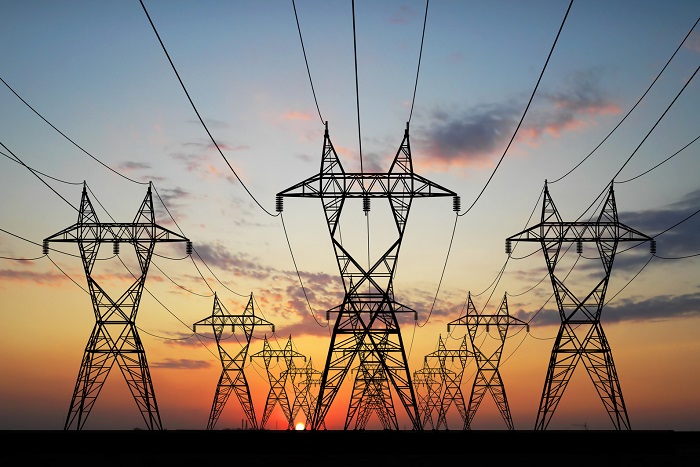For years now, amputees have reported the feeling of unusual sensations and neuropathic pain around cellphone towers and other technologies that produce radio-frequency electromagnetic fields. No formal study has been conducted into these reports until just recently when a team of researchers at the University of Texas (Dallas) decided to investigate the matter.
Their findings have since been published online in PLOS ONE.

“When roaming on a cellphone in the car kicked in, the pain almost felt like having my arm blown off again,” explained retired Maj. David Underwood, an Iraq War veteran who was injured by an improvised explosive device. The damage to his body from this event resulted in 35 surgeries and the amputation of his left arm. Additionally, shrapnel from the IED tore part of his leg, leaving him with more than 100 smaller wounds. “I didn’t notice the power lines, cellphones on roam or other electromagnetic fields until I first felt them in my arm.”
Studies on the possible effects of cellphone towers on humans have been done before, but they’ve all focused on individuals with no diagnosed, pre-existing conditions. The University of Texas study is the first of its kind to use a nerve-injury model.
“Our study provides evidence, for the first time, that subjects exposed to cellphone towers at low, regular levels can actually perceive pain,” said Dr. Mario Romero-Ortega, senior author of the study and an associate professor of bioengineering in the University’s Erik Jonsson School of Engineering and Computer Science. “Our study also points to a specific nerve pathway that may contribute to our main finding.”
Early on, the team hypothesized that the formation of neuromas, inflamed peripheral nerve bundles that develop as a result of injury, create an environment that might be sensitive to electromagnetic field-tissue interactions. So, with that serving as the foundation for the researcher, testing began with rats — specifically, 20 rats were divided into two groups, with one receiving a nerve injury that simulated amputation, and the other receiving a bogus treatment. The two groups were then exposed to a radiofrequency electromagnetic antenna for 10 minutes, once per week, for eight weeks. The power density delivered via the antenna was equal to that measured at 39 meters from a local cellphone tower.
The team found that by the fourth week, 88% of the rats in the nerve-injured group demonstrated a pain response, while only one in the bogus group showed pain at a single time point, and that was during the first week.
Worth pointing out — this was before the growth of neuroma. Once the growth of neuroma occurred, the pain response persisted.
“Many believe that a neuroma has to be present in order to evoke pain. Our model found that electromagnetic fields evoked pain that is perceived before neuroma formation; subjects felt pain almost immediately,” Romero-Ortega said. “My hope is that this study will highlight the importance of developing clinical options to prevent neuromas, instead of the current partially effective surgery alternatives for neuroma resection to treat pain.”
To this point, tests were also conducted at the cellular level to better understand behavioral response. This part of the research led the researchers to look into the protein TRPV4, which is known to be a factor in heat sensitivity, and the development of allodynia, which some of the rats in the nerve-damaged group displayed.
“It is highly likely that TRPV4 is a mediator in the pain response for these subjects,” Romero-Ortega said. “Our calcium imaging experiments were a good indicator that TRPV4 is worth further exploration.”
Romero-Ortego explained that since the study produced pain responses similar to those reported by amputees, the results “are very likely” generalizable to humans.
“There are commercially available products to block radio frequency electromagnetic energy. There are people who live in caves because they report to be hypersensitive to radiomagnetism, yet the rest of the world uses cellphones and does not have a problem. The polarization may allow people to disregard the complaints of the few as psychosomatic,” he said. “In our study, the subjects with nerve injury were not capable of complex psychosomatic behavior. Their pain was a direct response to man-made radiofrequency electromagnetic energy.”
During the study, the team brought Underwood in and showed him video of the rats in the experiment, and their response to radiofrequency electromagnetic fields.
“It was exactly the same type of movements I would have around cellphones on roam, power lines and other electromagnetic fields,” said Underwood. “It is pretty amazing that a few short conversations with this team led to validation of what I, and many others, experience.”
The team next plans to develop devices that block neuropathic pain from radiofrequency electromagnetic energy.
To learn more, download the paper from PLOS ONE, entitled Anthropogenic Radio-Frequency Electromagnetic Fields Elicit Neuropathic Pain in an Amputation Model.
Via the University of Texas
Advertisement
Learn more about Electronic Products Magazine





